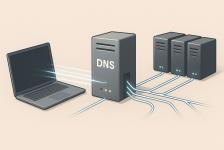Google opens doors to safer artificial intelligence. Introducing Gemma 2
Google introduces a trio of new AI models named Gemma 2, which emphasize security, transparency, and accessibility. The Gemma 2 2B model is optimized for regular computers, ShieldGemma protects against toxic content, and Gemma Scope allows detailed analysis of model functioning. Google aims to democratize AI and build trust.

Google embarks on a quest for more ethical and transparent artificial intelligence. As part of this effort, it has released a trio of new generative AI models named Gemma 2, which promise higher security, lower hardware requirements, and smoother operation.
Security first
Unlike the Gemini models, which Google uses for its own products, the Gemma series is intended for more open use by developers and researchers. Similar to Meta's Llama project, Google is also striving to build trust and collaboration in the AI field.
The first innovation is the Gemma 2 2B model, designed for generating and analyzing text. Its greatest advantage is the ability to run on less powerful devices. This opens the door to a wide range of users. The model is available through platforms like Vertex AI, Kaggle, and Google AI Studio.
ShieldGemma: Guardian against toxic content
The new ShieldGemma introduced a set of safety classifiers whose task is to identify and block harmful content. This includes manifestations of hate, harassment, and sexually explicit materials. In short, ShieldGemma acts as a filter that checks both the input data for the model and its outputs.
The final addition is Gemma Scope, a tool enabling detailed analysis of the Gemma 2 model's functioning. Google describes it as a set of specialized neural networks that unpack the complex information processed by the model into a more comprehensible form.
Researchers can better understand how Gemma 2 identifies patterns, processes data, and generates results. The release of the Gemma 2 models comes shortly after the U.S. Department of Commerce supported open AI models in its report.
These make generative AI accessible to smaller companies, non-profits, and independent developers. Additionally, the report highlighted the need for tools to monitor and regulate these models to minimize potential risks.
What is DNS? Everything you need to know about its functionality and setup

When you type a website address into the browser, the correct page loads in an instant. This is managed by the DNS system, without which the internet as we know it would not exist at all. In this article, you will learn what DNS is, how it works, what types of records it contains, and why it is important for both speed and security of the connection.
How does fiber optic internet work and what do you need for its installation?

Fast and stable connection is a basic necessity in every household today. The solution is fiber optic internet, which works differently than regular cables and offers greater reliability to users. We'll explain how this technology works in practice, what it entails to run a fiber optic cable to your home, and what equipment you’ll need to keep everything running smoothly.
Cloud gaming – the end of consoles in sight?

Cloud gaming allows you to play games from anywhere without the need for expensive hardware. In this article, you'll learn how game streaming works, what advantages and limitations it brings, and which services are leading the way today. And most importantly: can it really threaten traditional consoles?
Chips under the skin and in the head. The future is closer than we think

Brain microchips already allow controlling a computer with mere thoughts. In the article, you will learn how they work, what they have brought to the first users, and what promises scientists and Elon Musk associate with them. Along with hopes, questions about safety, ethics, and where this technology might take us also arise.
What consumes the most data on mobile? YouTube, Spotify, Netflix and other apps under scrutiny

Mobile data usage can sometimes be unpleasantly surprising. The most are consumed by video streaming and music services – how much data does YouTube, Netflix or Spotify use? And what about other apps like social networks, maps or video calls? Check out the overview of the biggest data guzzlers and find out how to keep mobile data under control.
How to find out who is connected to your Wi-Fi – and can you easily disconnect them?

Is your internet slowing down or do you suspect that someone unauthorized is connected to your Wi-Fi? We advise you on how to find out who is connected to your Wi-Fi, and what to do if you find an intruder.